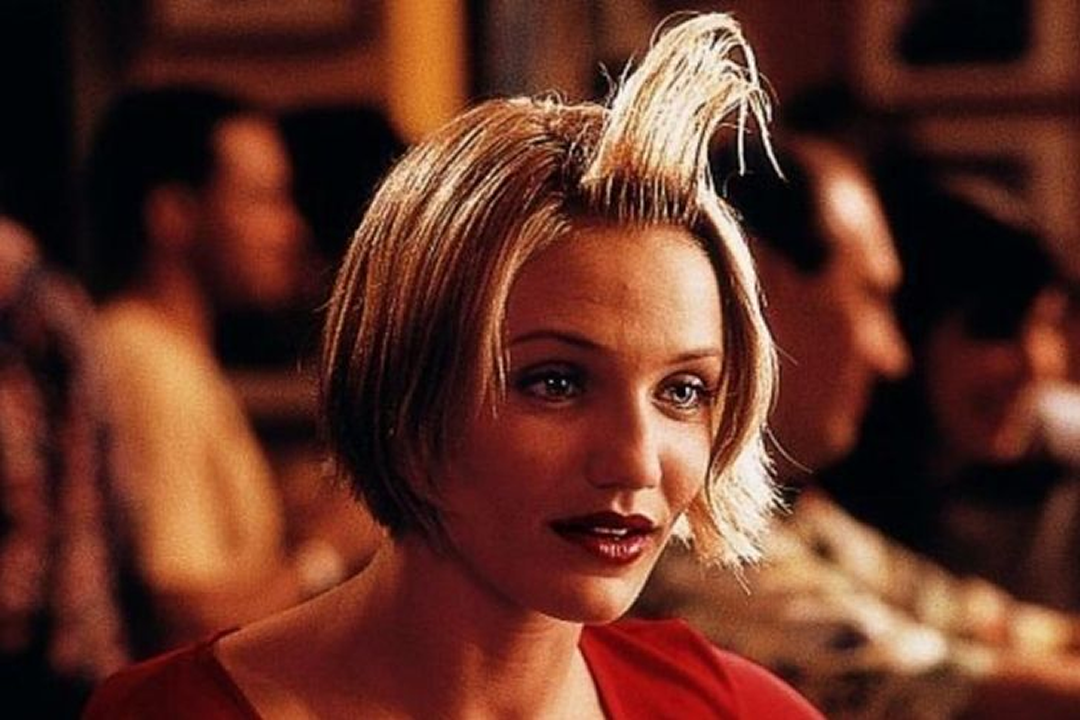There have undoubtedly been many moments where we watch with awe at certain movie scenes. In this list, we’ll look through some of the most jaw-dropping moments in cinema, detailing Meg’s rapture, De Niro’s menacing performances, to Hitchcock’s mastery of suspense—just to mention a few. We all loved a line or two from these movies that stuck with us. Some of these are sourced from the classiest of the classics, while others are from your typical popcorn, feel-good movies. It is to be noted, however, that foreign movies were excluded from the list. All credit goes to the people who made these movie moments happen.
Goldfinger (1964) | Laser Surgery
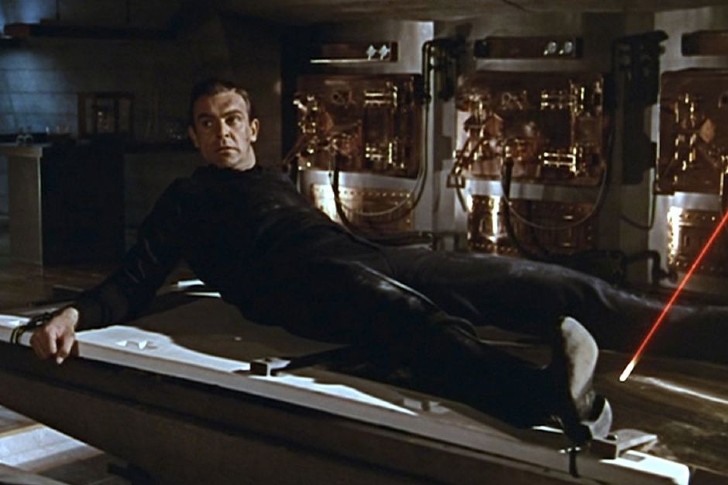
Goldfinger is the archetypal James Bond movie and director Guy Hamilton made sure of it. There is that fabulous theme song, the gadgets are superb, the villains memorable, and of course Sean Connery is at his best and coolest. Goldfinger is also given credit for the famous scene where Agent 007 is roped in and spread-eagled, with an industrial-grade laser veered towards his very manhood. Bond dryly says “You’ve made your point, Goldfinger.” Then later, he asks, “Do you expect me to talk?” Goldfinger then responds with the classic “No, Mr. Bond, I expect you to die.” Of course, Bond never dies.
Heat (1995) | Two Godfathers
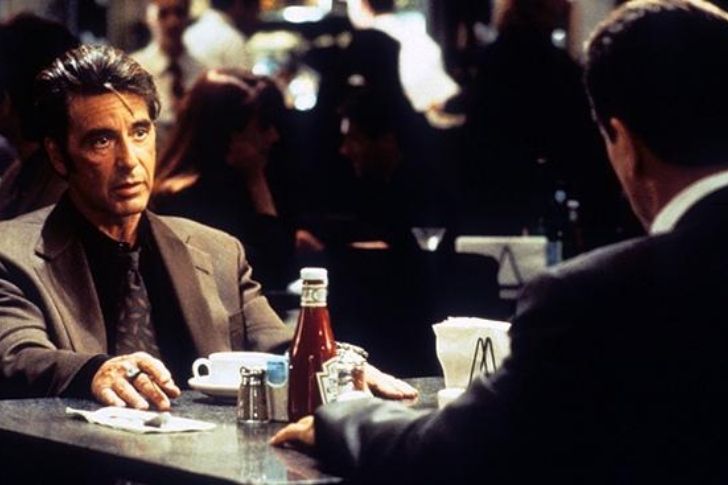
When we think of Al Pacino, we think of action—movement, guns, and all the necessary investments to kill the enemy. All these will get your heart racing. But you know what else can get your heart palpitating? Coffee. Yes. About halfway through the movie, Lt. Vincent Hanna (Pacino) pulls over a vehicle driven by the antagonist himself, Neil McCauley (Robert De Niro), and offers him coffee. For the six minutes that followed, viewers sat waiting for them to clash, but that did not happen. It is excellent foreboding for when these two met again, it wasn’t over a nice cup of coffee.
The Matrix (1999) | Freeze Frame
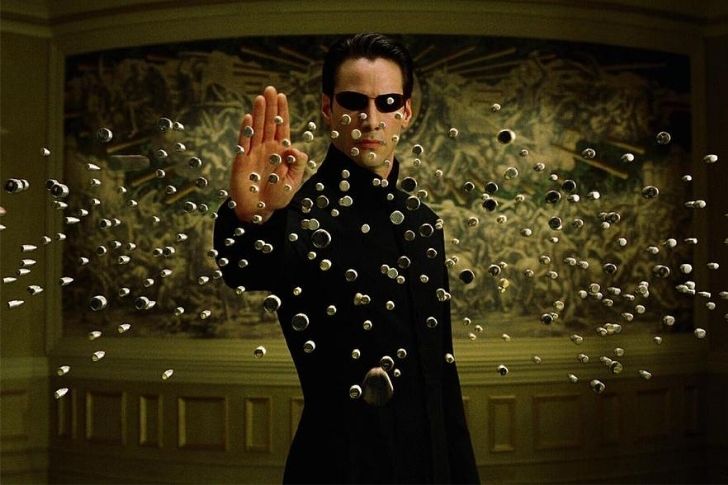
The iconic Keanu Reeves made investments for this film by training for four months for his action sequences. He worked with choreographer Yuen Wo Ping, and that finale match between Reeves and Hugo Weaving set the standards by which action scenes were judged for the many years that followed. This combination of alternate-reality with cutting-edge technology and martial arts went on to become a massive hit. Many have tried to replicate it, but the original still remains the best. Effects like mid-air freezes and rotating camera angles even inspired Mission: Impossible 2, Crouching Tiger, Hidden Dragon, and even Charlie’s Angels.
When Harry Met Sally… (1989) | Faking It
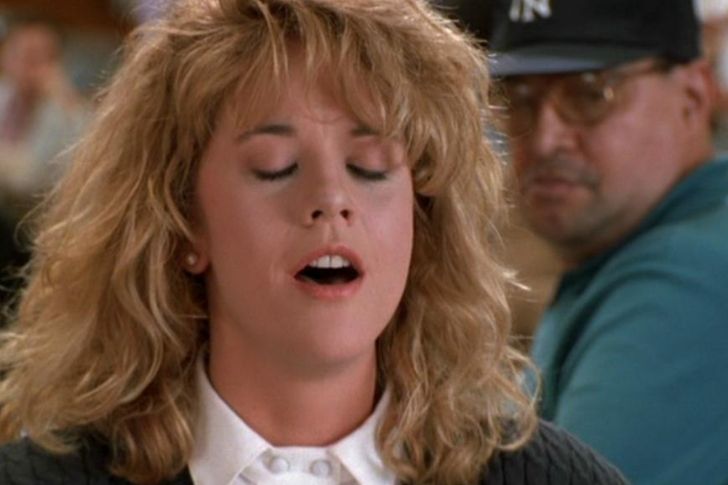
Who can forget that memorable scene that Meg Ryan deserves much credit for? We’ll all remember Billy Crystal’s mortified expression as he witnesses Ryan fake an orgasm. It’s not a secret that many men tend to fear this—that his lady might be faking it most of the time and he is not really giving her pleasure. Needless to say, many found it relatable. It’s hilarious and certainly one for the books. Drawing on this imagery, and perhaps the scene’s climax is what another customer, played by Estelle Reiner, said in a manner of fact tone: “I’ll have what she’s having.”
Dr. Strangelove Or: How I Learned to Stop Worrying and Love the Bomb (1963) | Nuclear Rodeo
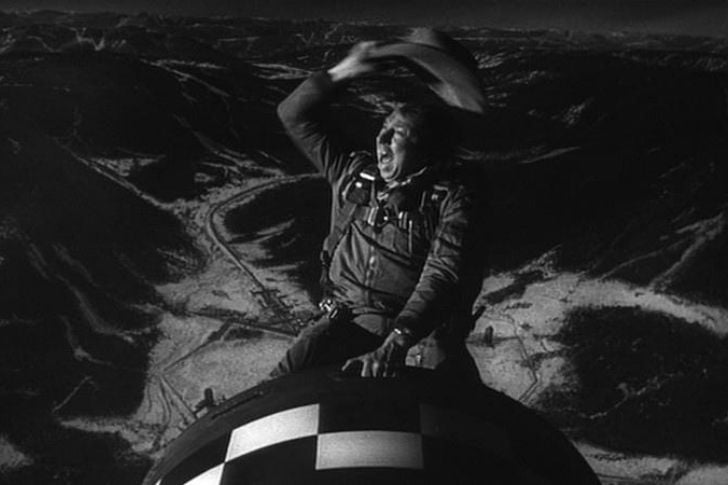
This classic black comedy by Stanley Kubrick glides beautifully from savage satire to faux-documentary realism. The story of nuclear annihilation is still the ultimate Cold War Time capsule. Peter Sellers is given credit and spotlight in three showy roles, but perhaps the most memorable is with character actor Slim Pickens. You have T.J. “King” Kong riding a nuclear missile like a bronco and repeatedly hitting it with his hat until it finally explodes—leaving behind a mushroom cloud in its wake. Apart from the virtual shockwaves, one would you’ll feel that familiar cold dread running through your spine—that of fear.
Big (1988) | Piano Men
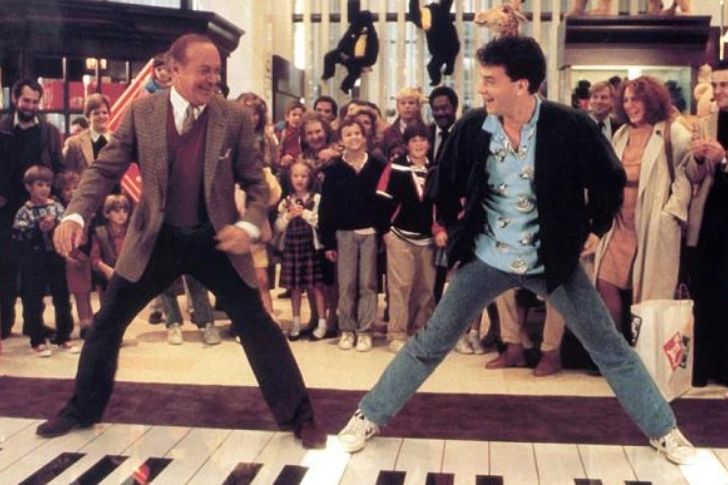
Who does not love Tom Hanks? He has portrayed many roles, including being a lawyer in a Cold War-era movie and he just really knows how to wow an audience. He hit the right notes when he performed as a 12-year old trapped in an adult’s body. Hanks, with his boss, played by Robert Loggia roused the crowd with their rendition of Heart and Soul on a floor size piano keyboard situation in a play store. Up to this day, that scene serves as a salute to boys (who seem to never grow up) and their toys. He truly is a master of his craft.
Star Wars (1977) | The Cantina
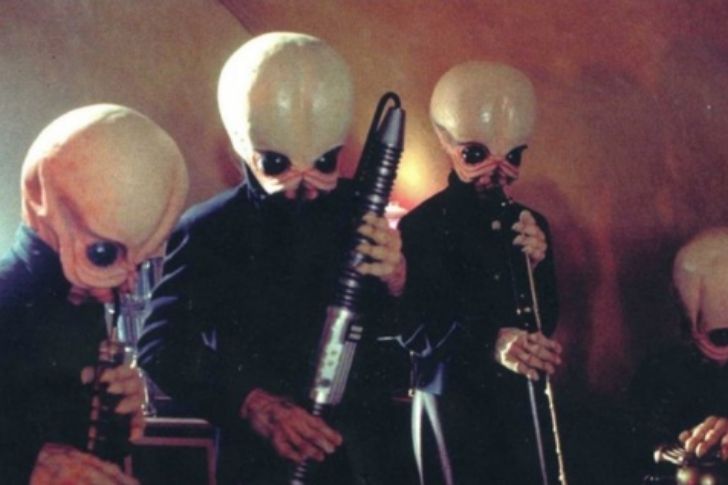
Avid fan or not, most people have watched a Star Wars movie. Filmed during a time when graphics were still not ad advanced, acting and a little camera trick were of paramount importance. Actors made investments towards that for the 1977 Star Wars. We were shown brilliant lightsaber duels, blasters everywhere, and dogfights which drew reactions from the audience. The visit to the bizarre world cantina filled with aliens was definitely a memorable scene and made it a favorite for many who fell in love with the franchise. This was actually said to be an homage to the Western theme of engaging in bar brawls.
There’s Something About Mary (1998) | Hair Gel
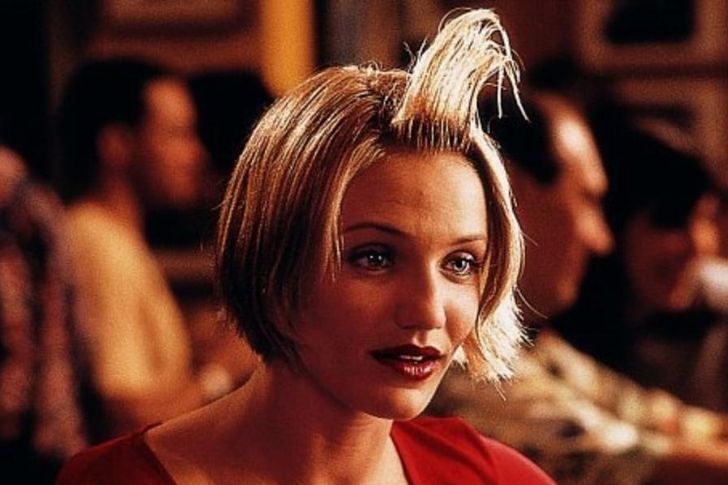
The line “Is that hair gel?” are just four simple words, but these made a whole nation jump in horror. The scene where the line was lifted from is given credit for perhaps being the best among the many hair-raising moments in the Farrelly brothers’ gross-out romantic-comedy smash. Another contender is Matt Dillon’s electrocution of that poor pooch. Sorry, pooch. Just imagine the angel-faced Cameron Diaz, who plays Mary, looking at the left ear of the actor and asking innocently the question innocently. Then she casually swoops in and says she needed some! The scene indeed redefined the gag in gag sight.
Dirty Harry (1971) | The Question
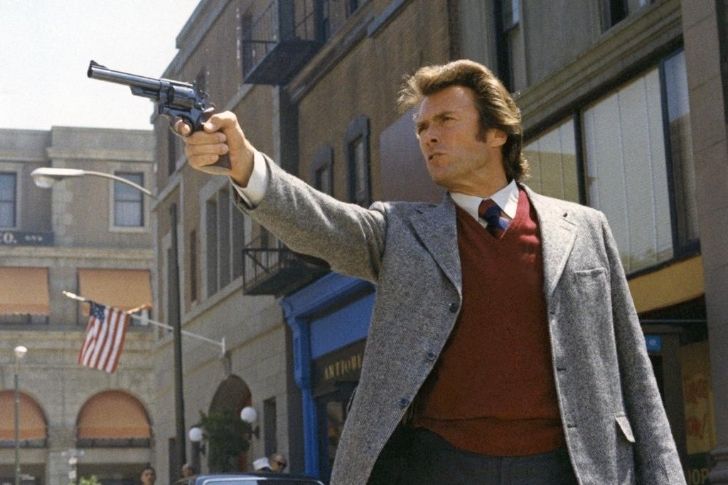
In a particular scene in this movie, Clint Eastwood as Detective Harry Callahan was interrupted by a bank robber from enjoying his hotdog lunch. After the shootout, he casually walks to the lone survivor and teases him as the robber reaches for the shotgun. We give credit to Eastwood’s chilling delivery of these lines “To tell the truth, in all the excitement, I kind of lost track myself. But being this is a .44 Magnum, the most powerful handgun in the world, and would blow your head clean off, you’ve got to ask yourself one question: ‘Do I feel lucky?’ Well, do you, punk?”
Alien (1979) | The Gut Buster
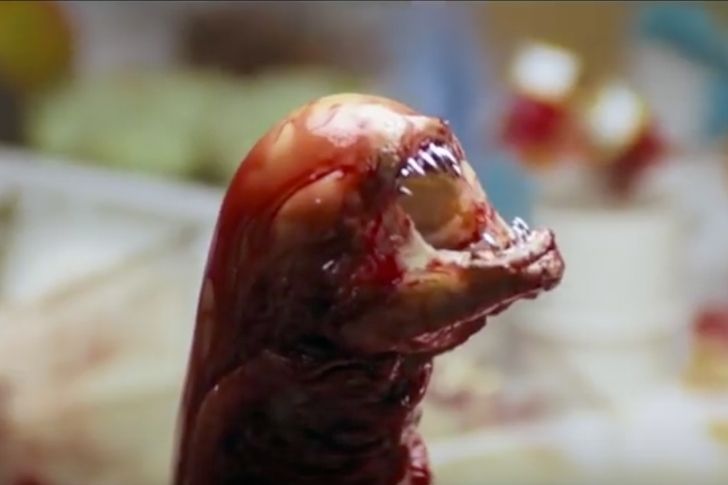
For some reason, alien movies always come with the grisly and the unknown, akin to paying off credit cards. In this movie, we knew that something was going to happen, but we did not know what and when. The face-hugging alien on the mug of John Critter did not vanish but re-entered the movie in a heart-shattering way. Word of advice, if you are trying to re-watch the film look out for this mess-hall sequence. Focus your attention as they eat and talk and see when Hurt starts, well, hurting. It appears that with his subtle expression, he was not surprised at all by the re-appearance of the alien.
High Noon (1952) | The Shoot-Out
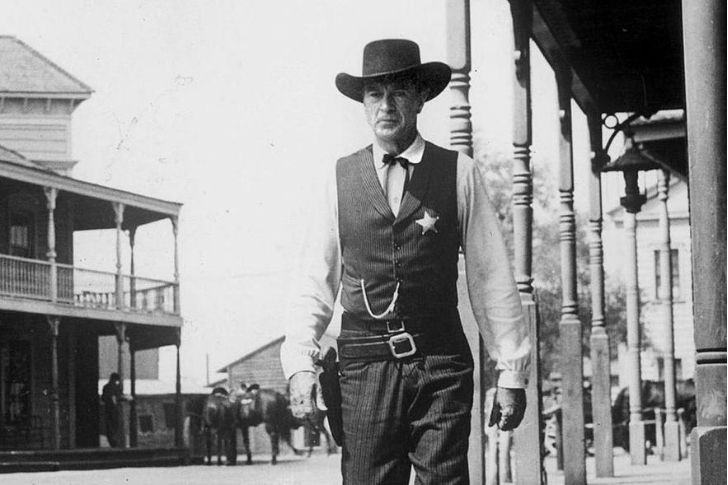
Shootouts are a staple of great Western movies and confrontations between the heroes and the villains in a dusty and abandoned street is not at all unusual. They usually have no need for attorneys, as disputes could be settled right there, guns and all, as with this scene in High Noon. Perhaps the most intense is when Marshal Will Kane was forced to stand alone against four desperados. He acted with such convincing facial expressions that you can almost feel his pain, and the fear he felt as everything exploded in what was considered as the showdown of all showdowns.
Saturday Night Fever (1977) | The Solo
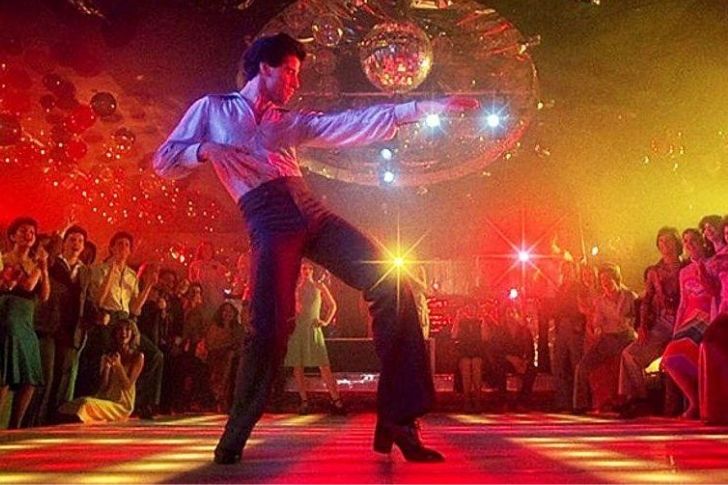
John Travolta was given credit as king of pop-culture when this movie came out. This Oscar-nominated movie made him a superstar and he shined the brightest during his sexy solo to the Bee Gee’s You Should Be Dancing. John Badham certainly did well in directing the movie and making sure that Tony Manero’s portrayal as that champion dancer of the disco remained ingrained on everyone’s minds, even decades after the movie’s release. It is interesting to note that writer Nik Cohn admitted to not having a full understanding of the disco subculture when he first wrote a fabricated article on the topic.
The Deer Hunter (1978) | Russian Roulette
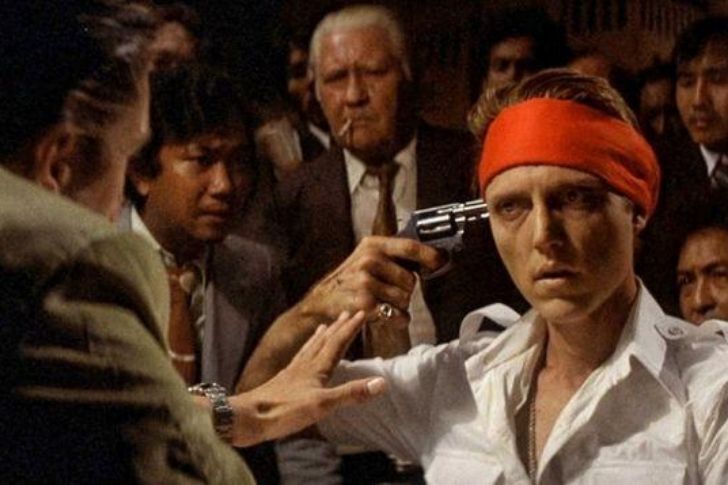
Being a prisoner of war is one of the scariest things there is. War crimes are known to be among the worst crimes against humanity. In one of the two Russian roulette scenes in the film, the trio of Americans (Robert De Niro, John Savage, and Christoper Walken) were forced to play the sadistic game by their captors. Those watching will fear their fear with every turn of the gun—that’s with credit to the actors’ amazing performance. The movie was criticized for the depiction, but the gunplay is still a powerful allegory to the cruelty and senseless suffering in Southeast Asia as perceived by the Americans.
The Graduate (1967) | Seduced
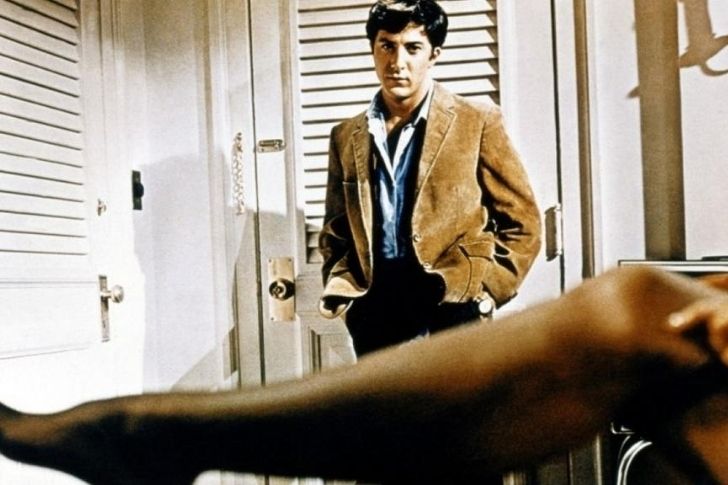
No other cinematic moment portrayed the 1960s generation divide better than Mrs. Robinson’s seduction of Benjamin Braddock in The Graduate. Hoffman became a Hollywood phenomenon overnight, for portraying the flustered college graduate, who probably has just started paying off student loans. The character’s relationship with the lonely, lecherous Mrs. Robinson (never mind that Bancroft, 36, was a mere six years older than Hoffman in real life) has since become legendary. The famous “Mrs. Robinson, you are trying to seduce me” was apt for that moment, as we see a glimpse of Mrs. Robinson’s seductively separated legs. The facial expressions and body movements were also precious.
The Public Enemy (1931) | The Grapefruit
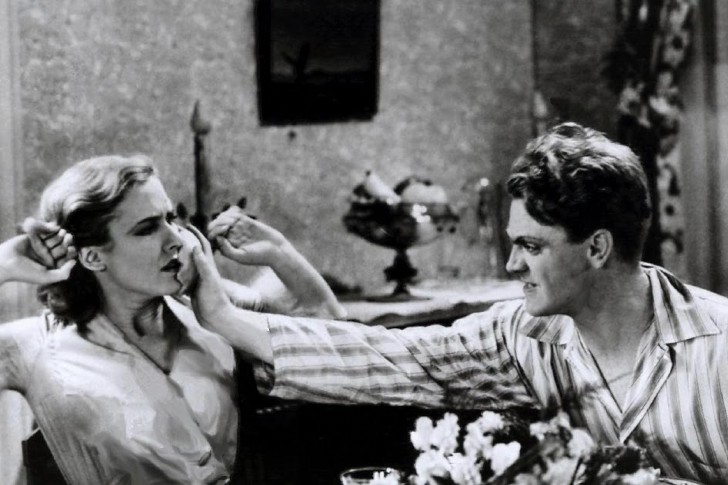
Gangster movies are classic. This particular film propelled James Cagney into the spotlight—thanks to his chilling performance. The director created sequences that reflected a seedy and amoral atmosphere but maintains realism. One scene is very compelling thought, that of Cagney’s argument with Mae Clarke, which ended with him shoving a grapefruit up her face. This scene could have easily warranted a lawyer in today’s world, but the jarring scene has left its mark on pop-culture. Whilst such scenes might not be to everyone’s taste, we have to give the actor and the director kudos for pulling it off.
Five Easy Pieces (1970) | The Chicken Salad Sandwich
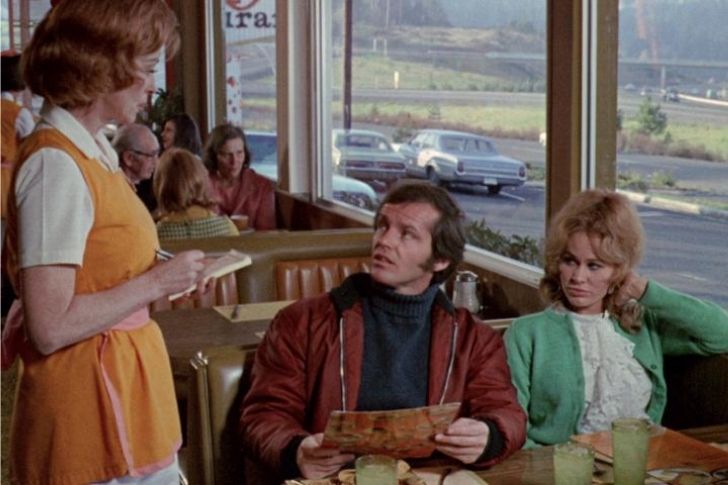
In this movie, Jack Nicholson plays the prodigal son returning home to see his dying father. Given the situation, to a great degree, the character was full of emotions. There was also a lot of pent-up anger that was eventually taken out on the waitress who refused to bring him an order for toast, something off-menu. The conflict between the two erupted when the waitress loses her cool after Nicholson’s character asks her to “hold the chicken between your legs”. When asked to leave, he promptly clears the table with one quick sweep with all that is on top of it.
All About Eve (1950) | Storm Warning
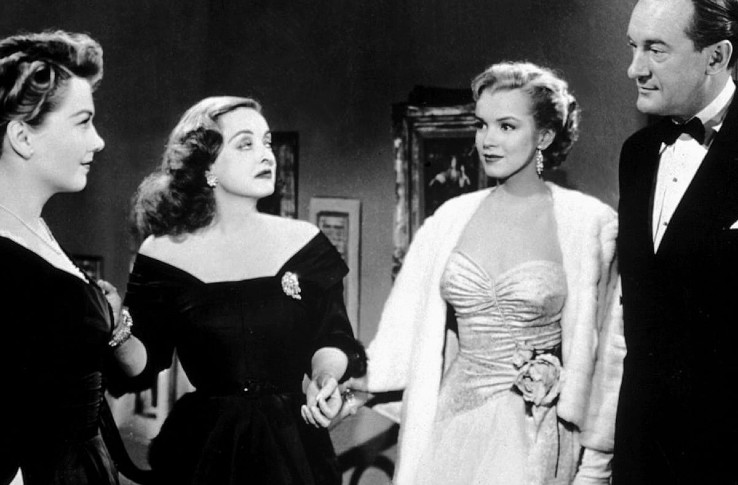
The favorite line of every drag queen, spoken by the supreme: “Fasten your seatbelts: it’s gonna be a bumpy night.” The martini-soaked omen from Bette Davis did not just the mood for the party sequence, but also the entire backstage saga. Knowing that Eve was a stalker, Margo Channing utters the warning like a sly fox. This film was given credit for having more memorable one-liners than an entire season of Sex and the City. Indeed, these classic film stars were true to the brand and shine even beyond their time. Davis would have “dragged” many of the actresses today in terms of acting.
Glory (1989) | The Tear
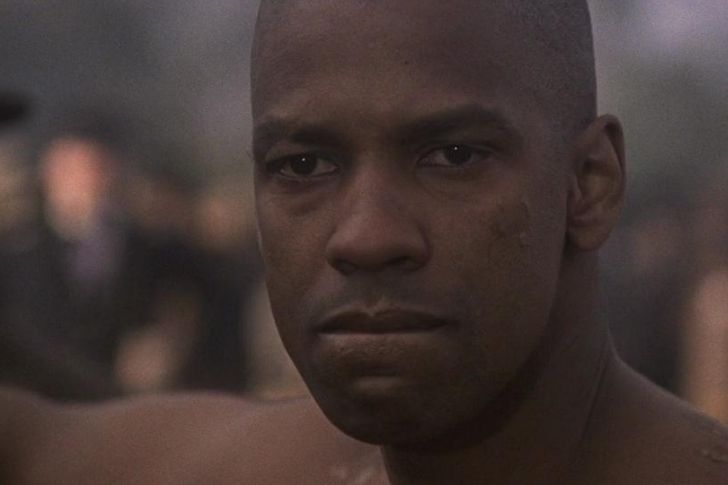
Oscar-winner Denzel Washington has talents at par with the brightest stars in Hollywood. In this fact-based movie about a Union regiment of black soldiers, Washington was able to showcase his talent once more. Playing a runaway slave, the hatred and the want to fight everybody was made apparent in the imagery of the film. While being whipped, his back showed crisscrossed scars from the countless previous lashings he received. Racial tensions were also evident to a certain degree, as he stared with disdain at his white officer. To top it off, the staring went on even as Washington shed a single tear on his right cheek.
Cabaret (1972) | Hitler Youth
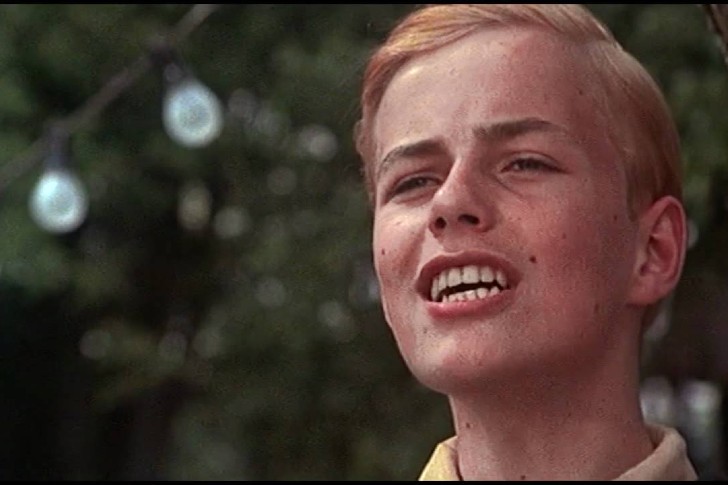
This star-making performance of Liza Minnelli brought the Hollywood musical into the modern age. The musical was filled with many wonderful numbers. The Minnelli-Grey duet for Money, Money was powerful. The blond boy who sang Tomorrow Belongs to Me in an outdoor café was also memorable. As the camera moves to reveals the boy’s uniform and swastika armband, the other fresh-faced Nazis joined him. The contrast between the lovely melody and the ugly message has never been more pronounced. The same message could be said of the opposition between the Hitler youth and the old man—life would not remain forever a dance.
The Birds (1963) | The School Yard
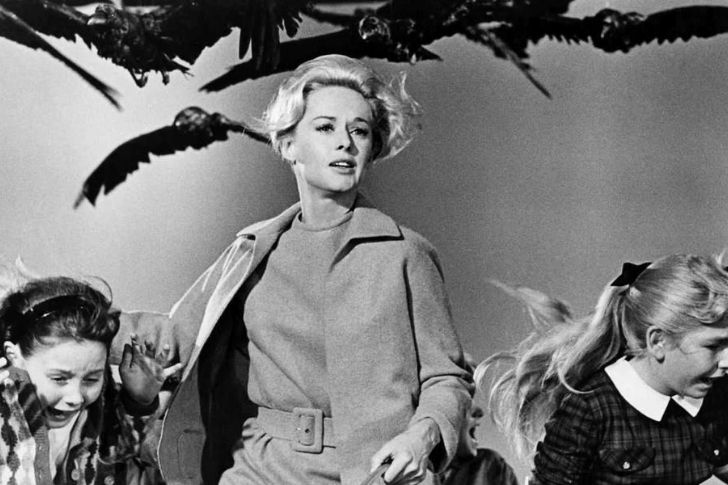
The movie was a technically-challenging one. It took three years of time and investments on what would be remarkable 370 special-effects shots. The most memorable perhaps is that scene where Melanie was seen smoking the slowest-burning cigarette in cinematic history, while on a swing set of a schoolhouse. Hundreds of crows gather behind her as a nursery rhyme could be heard emanating from the school. Melanie sees a bird in mid-air and she watches this crow land on the bird-packed jungle gym. What followed would be traumatizing to any kid or even an adult who would have watched the film for the first time.
Annie Hall (1977) | Love On a Rooftop
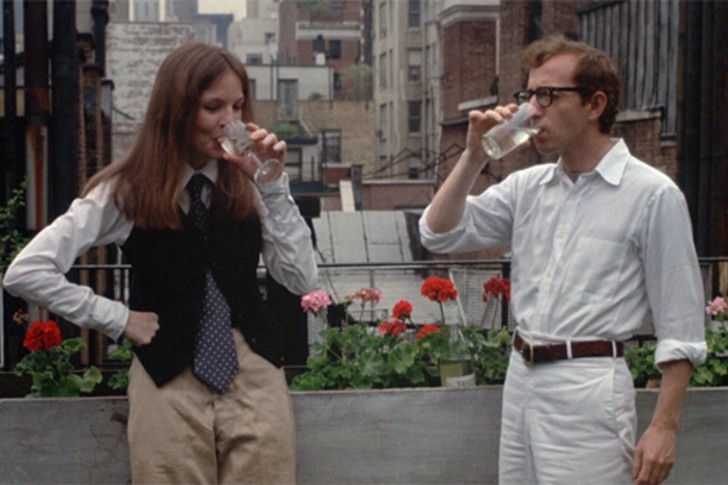
Woody Allen has been given credit for many other brilliant films such as Manhattan and Sleeper, but, perhaps, there is no one more popular or poignant than this urban love story that won him an Oscar. The storyline was inspired by his off-camera romance with Dianne Keaton. Everybody has their favorite scene; from the lobsters to the cocaine sneeze, the getting-to-know chat between Keaton and Allen, to where Allen was on the deck of Annie’s apartment. There were many fumbling conversations that are typical of the first flush of love. These scenes lend an eye to the couple’s thoughts.
The Lady and the Tramp (1955) | Dog Food
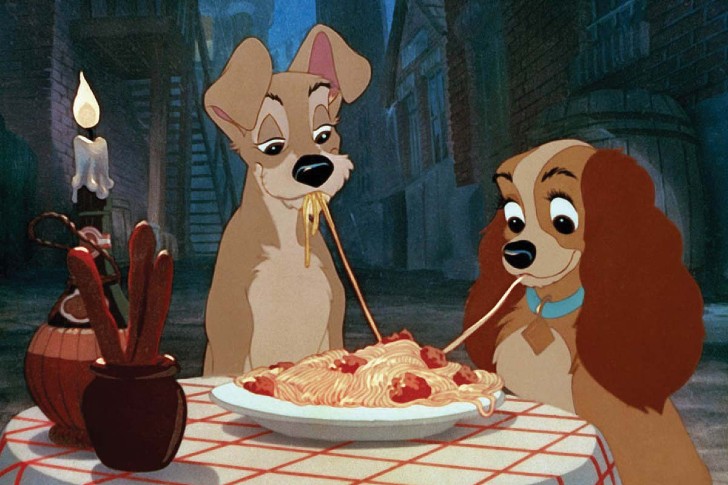
Walt Disney gets credit for making films meant for the children in all of us. In this movie, Walt immortalized a cherished scene. Try saying “spaghetti scene” and many would go love-struck. In this sequence, Tramp takes Lady to his favorite Italian restaurant, where the two share an Italian dish composed of pasta and meatballs. They then ended up nibbling one strand of the same noodle, and when their lips meet, they share a delightful and unexpected kiss. Quite literally puppy love! And we know that our puppy loves never could be forgotten as they were our first taste of love.
Sunset Boulevard (1950) | The Close-Up
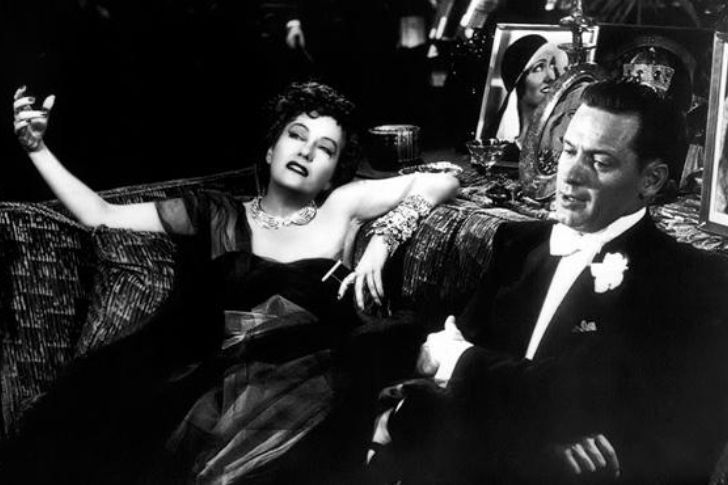
We know quite a score of madmen and madwomen in movies who have delivered classic lines. In this movie, while descending a gilt staircase and surrounded by a swarm of police and cameramen, Gloria Swanson’s killer, Norma Desmond, was heard delivering her final lines: “All right, Mr. DeMille. I’m ready for my close-up.” Her spiral into psychosis was sad and melancholic as it was over-the-top. The move from the upper section of the stairs downwards enigmatically symbolizes the degree of descent from sanity to lunacy in a short period of time. This classic scene can still be remembered by many, even today.
From Here to Eternity (1953) | Waves of Love
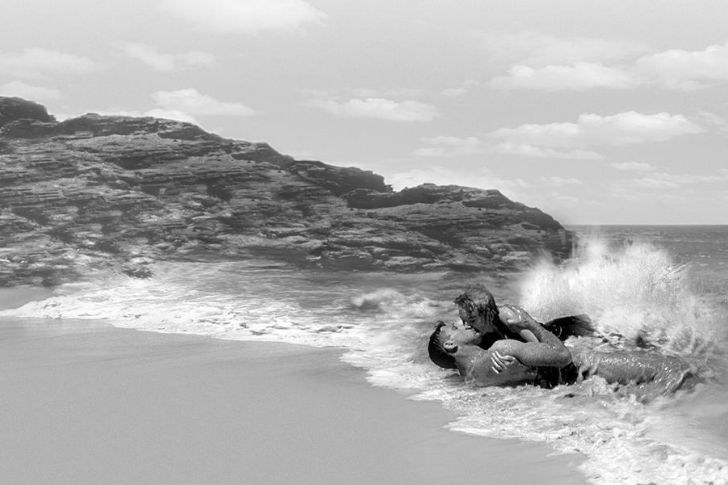
This novel-based movie about Pearl Harbour is remembered today for its beachside tryst—the surf, the kiss, and the beach. Burt Lancaster and Deborah Kerr’s locking of the lips was mocked on numerous occasions and platforms, but only a few of the movie’s iconic moments captured sexual urgency and raw emotional frankness. Kerr had played only demure roles until this time, so this was quite a change of pace. She gave it her all in the scenes. Lancaster, meanwhile, was portrayed as an ideal soldier, with the love of country paramount to his heart and willing to give up even the love of his life.
The of the Opera (1925) | Unmasked
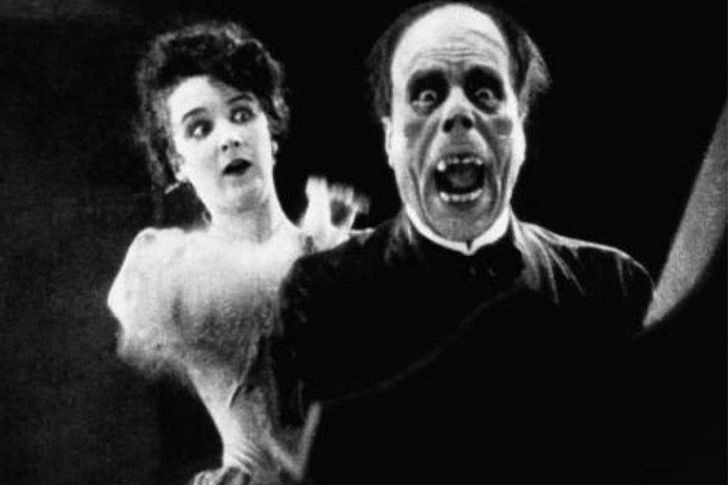
Silent star Lon Chaney is given credit as “the Man of a Thousand Faces.” He has created his own makeup for different characters; from old ladies to hunchbacks. But, what many consider as his crowning glory was the disfigured Phantom, known to haunt the catacombs of a Paris Opera house. The moment when the abducted Christine sneaks up behind him and rips off his mask is still ranked as one of the most vivid in the history of horrors. His face depicted death. The makeup was so frightening that photos were banned prior to the film’s release, a reminder of how images can be that powerful.
Network (1976) | Mad As Hell
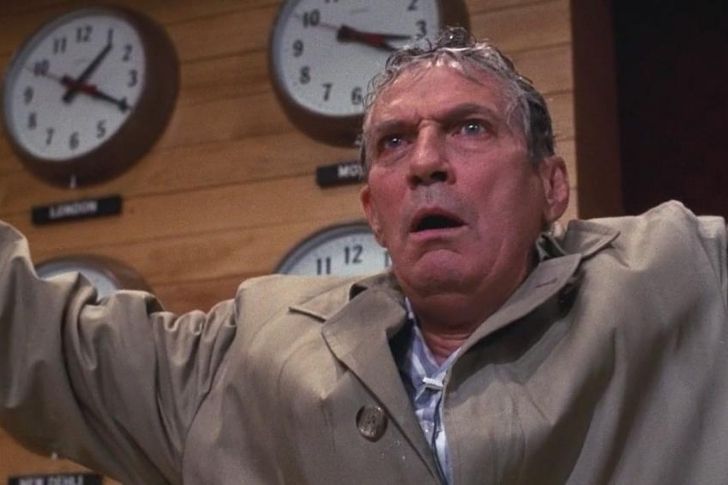
Demented Howard Beale’s frustration and rage against a society that has been dehumanized by the bureaucracy were articulated when he said “I’m as mad as hell, and I’m not gonna take this anymore!” This declaration was cemented in the viewers’ minds and this scene is still capable of sending chills down anyone’s spine. This phrase is now heard almost anywhere in America as a lexicon of liberation and outrage. Finch’s performance was convincing and electrifying to the highest degree, that he won an Oscar for his acting in this film. Sadly, he died of a massive heart attack two months before the ceremony.
GoodFellas (1990) | The Funny Guy
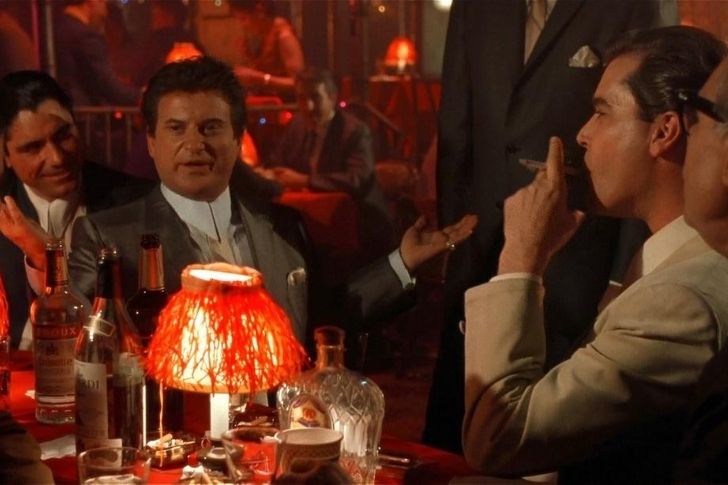
Amid the mobbed restaurant, Joe Pesci’s terrifying “I amuse you?” speech is perhaps one that stood out. Playing Tommy DeVito, a gangster not well-endowed with height, and with a quick temper to boot, Pesci was said to have improvised the dialogue after he shared an encounter he experienced to director Martin Scorsese. Many other actors and directors tried to mimic this blend of humor and menace but could not beat the Pesci-Scorsese combo. Well, portraying humor in a negative situation and vice versa can be difficult as it takes a lot of craft mastery and acting investments from the movie players.
Chinatown (1974) | Slap Jack
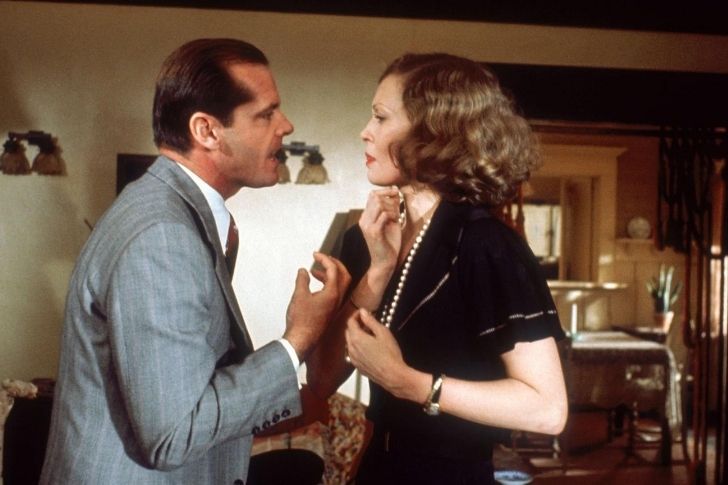
Finding out about a deeply-rooted land scam in a booming pre-World War II Los Angeles can be nerve-wracking for a detective. Detectives like Jack Gittes are expected to be experts at knowing a lot of things, especially on matters involving investigations and interrogation, but of course, it does not mean they know it all. He conveyed as much in a conversation with Evelyn Mulloway. What was scandalous, however, was the revelation that Katherine is her sister and daughter at the same time. Finally, to a degree, she was able to talk about how she was raped by her father—a most traumatic event.
Citizen Kane (1941) | Rosebud
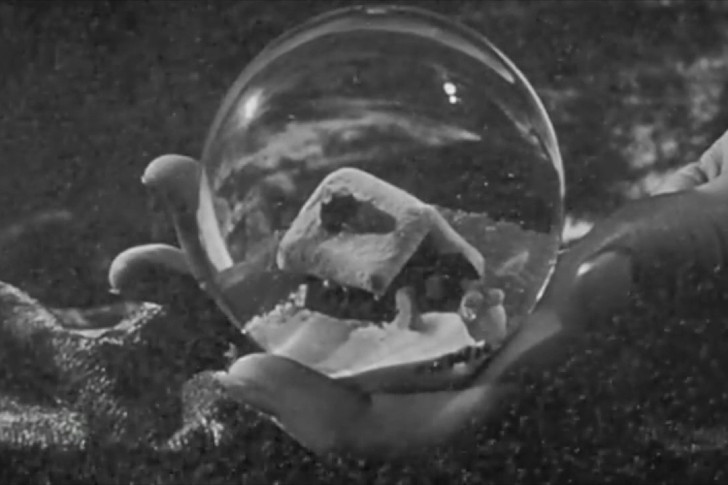
Decades later Citizen Kane is still remembered for how 25-year old Orson Welles played different roles in the movie—its producer, co-screenwriter, star, and director. The film was given credit for having one of the best cinematography. In one scene, the camera is focused on a snow-covered house and when it pulled back, a snow globe in a man’s hand was revealed. A distorted image of a nurse was reflected in the glass. The nurse then pulls a sheet over Kane’s head as the lights flicker out. Rosebud’s mystery thus began. And so does the newer, more sophisticated age in Hollywood filmmaking.
2001: A Space Odyssey (1968) | Hal’s Half Crazy
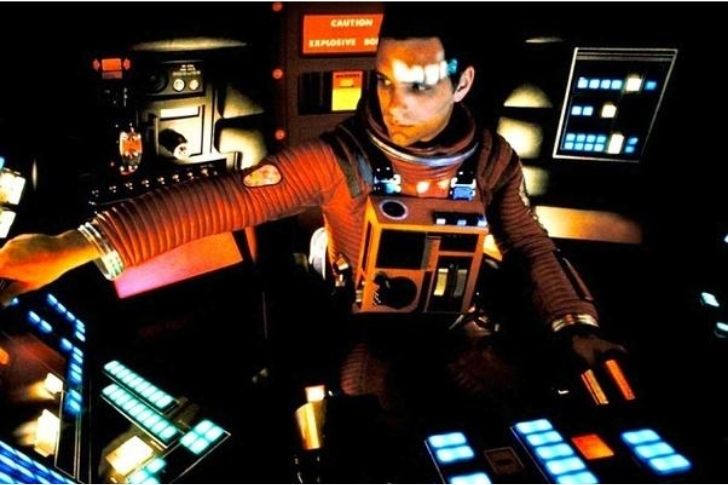
Filmed just over 20 years ago, this movie shows an outburst of celestial lights coming from the mysterious monoliths to a spaced-out star child. The climax in this movie, however, is the moment when HAL 9000 was dismantled. As the computer’s memory and logic circuits were taken apart and disconnected, one could hear the maddeningly calm voice regress to showing childlike vulnerability and then ending with a rendition of Daisy. Way before the investments in science resulted in the technology we have today, author Arthur C. Clarke and Stanley Kubrick were already predicting the degree of how advanced machinery can become.
North By Northwest (1959) | The Crop Duster
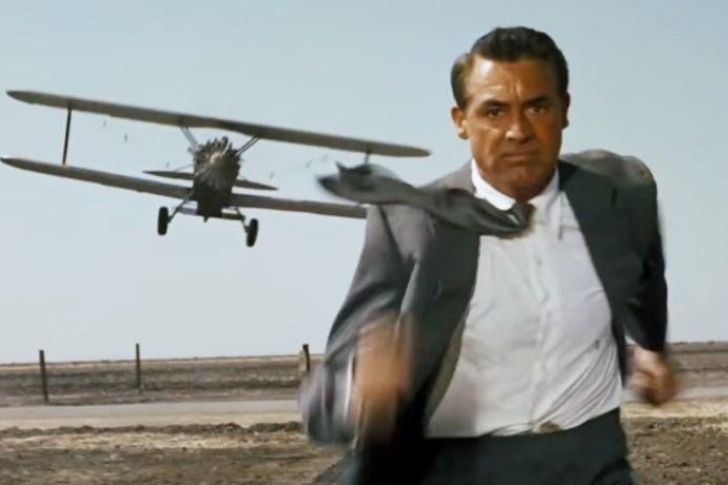
This movie is crammed with scenes from known local places such as Manhattan’s Plaza Hotel and Mount Rushmore. An empty prairie looks innocent enough, but when an advertising executive finds himself in the sad landscape, he sees a biplane come into view, buzzing closer. This then forced a terrified Cary Grant to take cover in a cornfield. As it turned out, the biplane was a crop duster and was spewing clouds of poison from the sky. The scene lasted 10 minutes, but not a single second was squandered. That kind of time investment in today’s fast-paced movies would be unthinkable but they had that luxury then.
Jaws (1975) | The USS Indianapolis
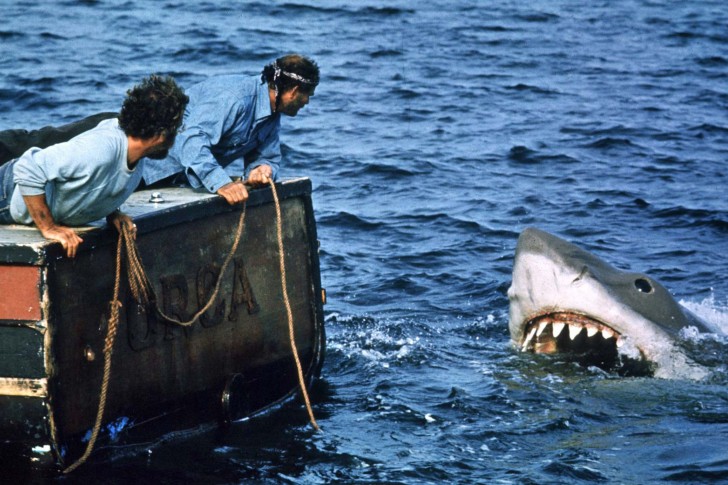
Shark hunters Richard Dreyfuss and Roy Scheider held the audience spellbound in this movie. As they plunged into the shark-infested South Pacific Ocean, they were not mindful that it had already claimed more than 700 sailors. For a moment, the moviegoers forgot the terrifying shark villain of the film and were taken back to history. The movie grossed a total of $470 million and has established itself as one of the most memorable movies of all time. To this day, talks of sharks still bring the picture of a behemoth lurking in the oceans. All credit goes to the star-antagonist in this movie.
The Exorcist (1973) | The Full Swivel
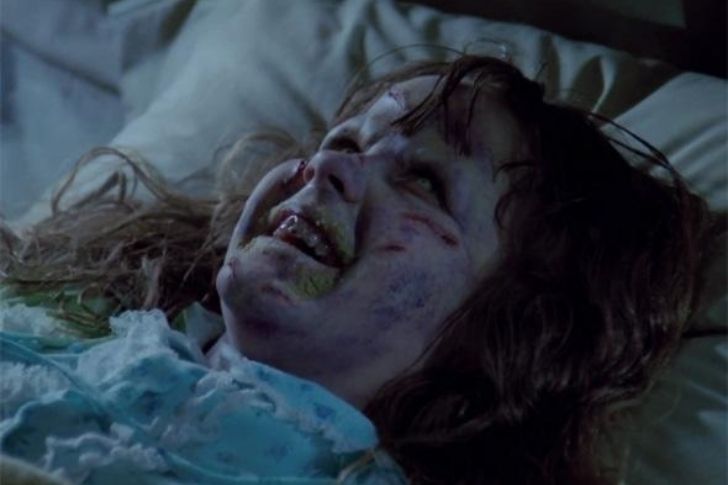
The gut-wrenching exorcism was one of the most iconic scenes for the 1973 movie. In this sequence, the contrast and battle between good and evil were personified to an extreme degree. As holy water and incantations are thrown out, the head of Linda Blair turns and does a full swivel. This not only elicits fear out of the viewers but most likely screams as well. When the two priests fail to drive out the demons using traditional religious methods, the younger priests take the matter into their own hands by beating the devil in a bid to drive out the demons.
Battleship Potemkin (1925) | The Odessa Steps
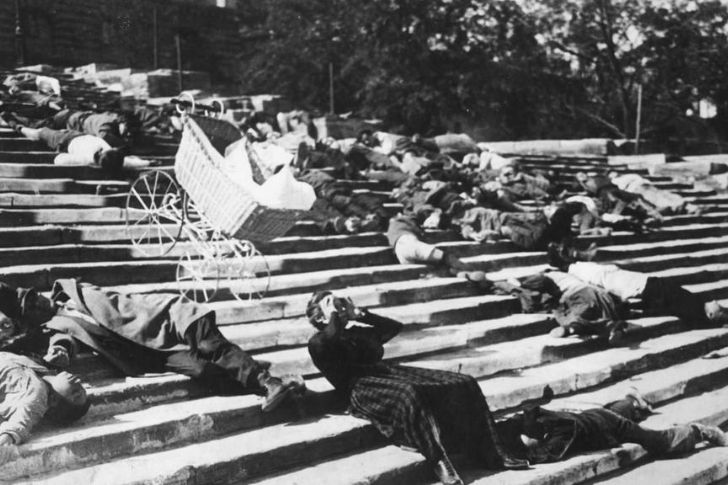
Given credit by many as one of the team’s greatest movies of all time, this reel-to-reel depiction of a 1905 revolutionary uprising is the forerunner in the now-standard technique of editing montages and the symbolic juxtaposition of shots. The most memorable scene in the movie, however, is the massacre on the Odessa steps. Here we can see Czarist troops marching down a long staircase while shooting at innocent men. Another jarring moment was when a baby carriage was shown bouncing down the stairs. The scene gets credit for being heart-wrenching— with innocent lives hurled into a war they don’t even understand.
To Kill a Mockingbird (1962) | The Savior

In this movie, Gregory Peck won an Academy Award for playing the role of heroic lawyer Atticus Finch. But this is not the only remarkable piece in the film. Boo Bradley’s introduction, played by Robert Duvall towards the end was equally memorable. The scene did not last more than three minutes, but for producer Alan Pakula, it was the reason why he made the film in the first place. Boo’s appearance after rescuing Scout and her brother Jen from a gruesome attack can be compared to a guardian angel coming from heaven to earth. Scout’s “Hey, Boo” was the perfect greeting!
The Seven Year Itch (1955) | The Subway Breeze
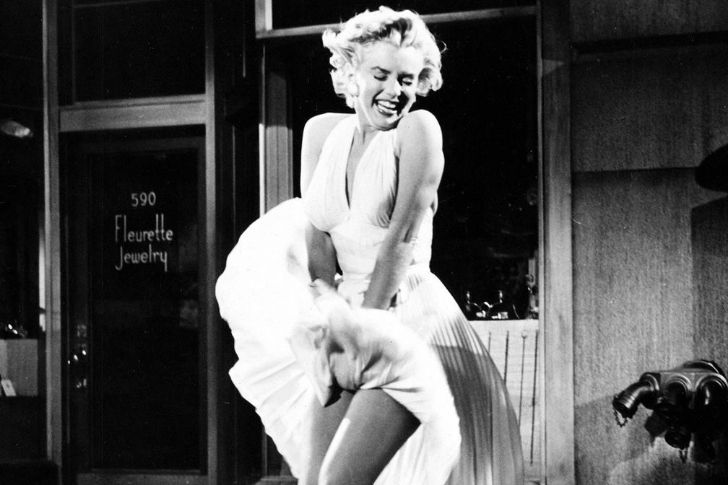
Marilyn Monroe was said to be among the most beautiful women in American film history. Her portrayal in The Seven Year itch has cemented its place in pop-culture, with the famed image of Monroe astride a subway grate with her white, airy dress wafting just high enough to make any man fall in love with her—to the rage perhaps of real-life husband Joe DiMaggio. He would have called an attorney to sue those who looked at his wife with admiration. When she said “Isn’t it delicious?” with all the sweetness that only Ms. Monroe can muster, the audience must have been so thrilled.
It’s a Wonderful Life (1946) | The Rent Party
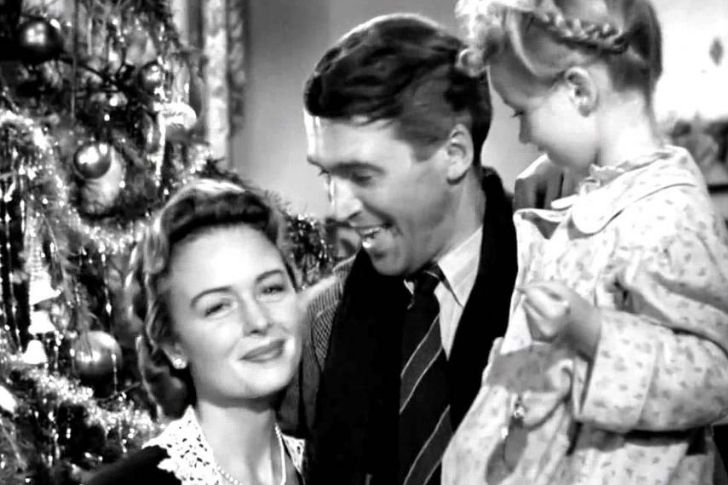
Moviegoers typically like emotional extremes, and this movie gets credit for making the audience feel various emotions. In this Christmas movie, Jimmy Stewart shows off how he can masterfully convey his character to the audience. The film is a perfect vehicle for Stewart’s heart-on-a-sleeve style; especially when his character found out how much his selflessness and investments in loving his family meant to them, including his friends. The film has cemented itself in cinema history for being one of the most poignant and beautifully delivered stories. Decades after, many people still cite it as their favorite—this is thanks to the actor’s performances and relatable storytelling.
On the Waterfront (1954) | The Speech
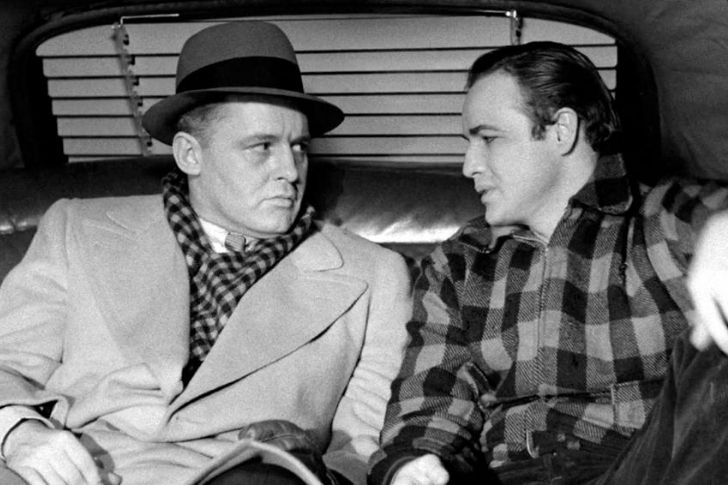
The scene where Charley and Terry sit in the back of a taxi, complete with shadows and lights flashing across their faces, talking about testifying against the local labor bosses is one of the most powerful scenes in the movie. Charley was desperate to keep Terry from coming to court, lawyer and all, to testify. Charley tried bribery and threats but they did not seem to work. He even pulls out a gun, but Terry launches into a speech that reeks of regret, accusation, and never-ending sadness. In the hands of a lesser actor, this would have been mere ramblings, but not with Marlon Brando.
Bonnie and Clyde (1967) | The Ambush
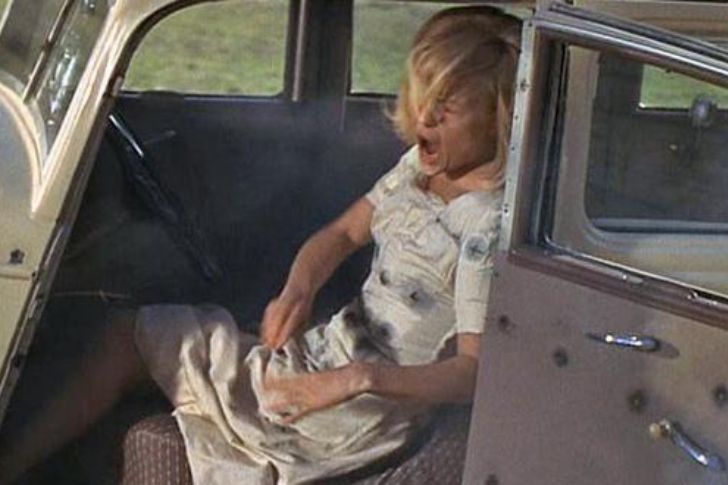
During the late 1960s, the film was criticized for its violence. The stunning finale where the Depression-era outlaws were ambushed, left riddled with bullets was a strong scene. The death depicted in the movie created an outrage that overshadowed the artistic vision of Arthur Penn, who made investments to make sure the film comes out exquisitely. Even during the middle of the film, there was already that sense of doom, but the finale still came out as brutal. Given its close-ups, slow motions, and the strangeness of the aftermath. Penn accomplished blowing away the anti-heroes as well as the romance of living a criminal life.
Taxi Driver (1976) | Mirror Image
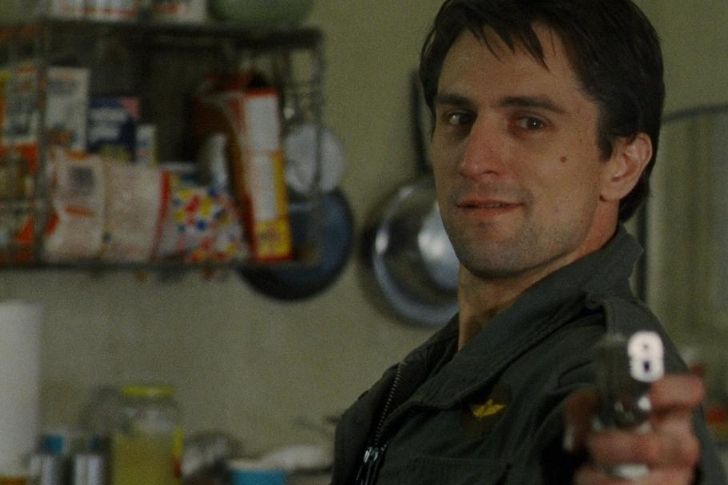
To prepare for his role in the movie, Robert De Niro actually spent a month driving a cab in New York. He got familiar with the culture and developed his character. For this memorable scene, however, he did not need such on-the-job training. After, making quick gun draws, De Niro’s character asks his reflection in the mirrors several times “You talkin’ to me?” The self-talk depicted a disturbed soul that is breaking apart. Near the film’s end credit, the actor looks at himself in the mirror and says “You’re dead.” Whether it was himself or his enemies is left to our imagination.
Titanic (1997) | The Sinking
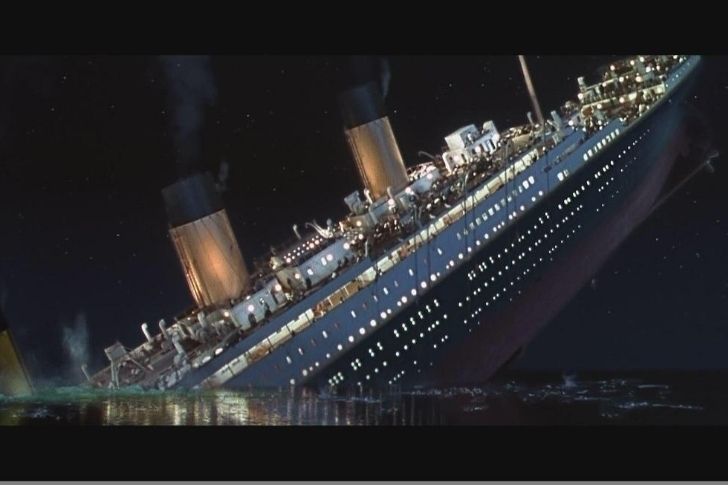
Everyone remembers The Titanic, even those of the younger generation. The movie was given credit as among the most expensive movies in Hollywood history, and certainly, no penny was spared—from the visits made to the ocean floor to the detailed replica made of the iconic ship. Despite limited technology, James Cameron’s superb directing skills made the movie scenes look real and lifelike. The sinking of the ship, apart from Jack’s eventual death in the frigid waters, is one of the best parts of the movie as one could hear and see what was going on, given the realistic mock-up.
A Night at the Opera (1935) | The Stateroom
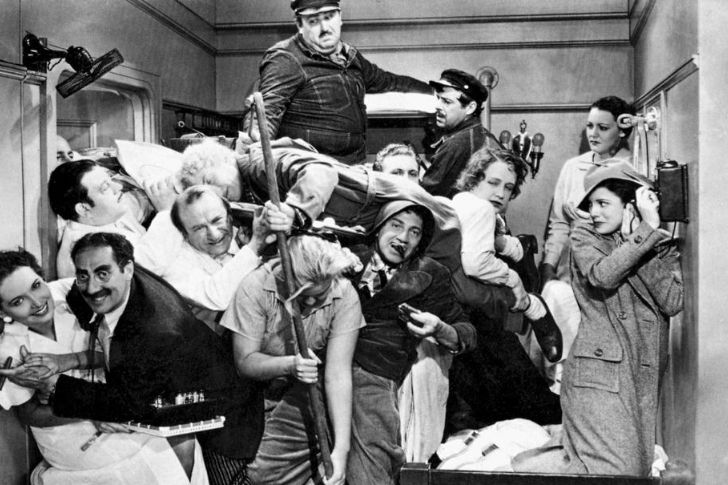
A Night at the Opera is a movie filled with rib-tickling sight gags, funny one-liners, and of course, riotous routines. Director Sam Wood’s careful manipulation fully captured the enthused insanity of the Marx Brothers. Laughter is an essential part of the movie, and in the unruly set-piece, one actor after another crowd into the bursting stateroom—eliciting laughs from the situation. The chaos only ends when Margaret Dumont opens the door and everyone rushes out. The Marx Brothers are usually given credit for being anarchic, but A Night in the Opera appears to be the most chaotic of them all.
Singin’ In The Rain (1952) | The Rain Dance
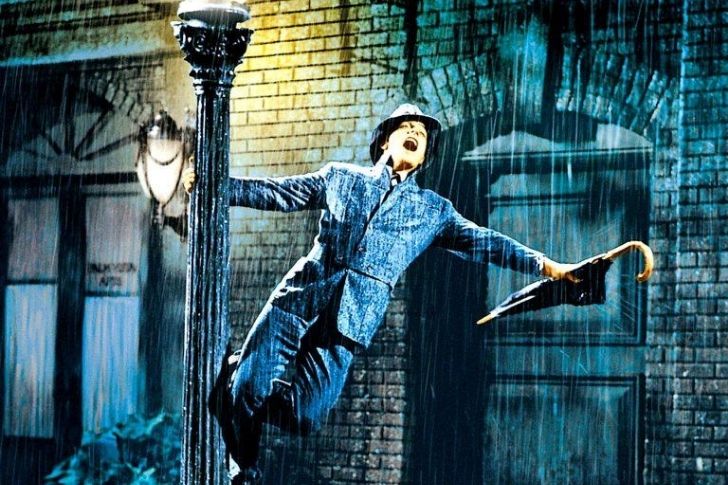
This movie gives us one of the most memorable performance sequences from Golden Age Hollywood. Gene Kelly superbly dances in the rain in a tweed suit and a fedora. He takes to the waterlogged streets, swinging around a lamppost, tipping his hat to an officer of the law, and splashing through puddles. It is good to note that while this scene is not given credit as the most elaborate number in the entire movie, it is one of the most memorable. To add to that, Kelly also played multiple roles, as the movie’s co-director, star, and co-choreographer. It’s a cinematography feat that we rarely see today!
The Wizard of Oz (1939) | The Meltdown
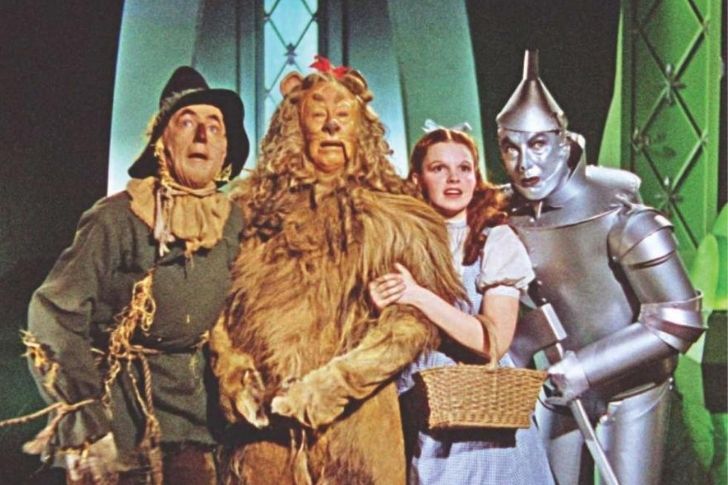
Many have seen The Wizard of Oz and loved the storyline. This children’s story is given life in the movie. For it, MGM poured in substantial investments. It got the full Technicolor treatment when it was adapted for the big screen. The movie’s pyrotechnics was second only to the emotions shown in the film. In the confrontation between Dorothy and the Wicked Witch of the West, the scene ends with a bucket of water thrown to save a friend. A memorable exit line was also heard when the witch says “Who would have thought a good little girl like you could destroy my beautiful wickedness?”
Gone With the Wind (1939) | Frankly, My Dear…
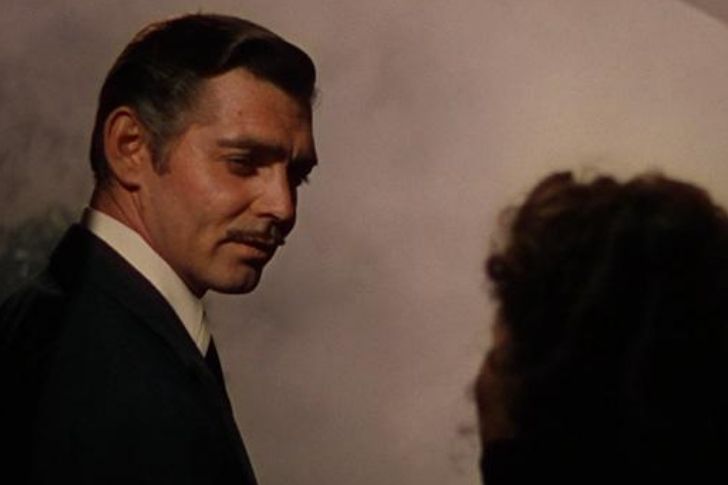
The audience was certainly captivated by the movie adaptation of Margaret Mitchell’s 1936 novel. This epic historical romance film follows the story of Scarlett O’Hara and her romantic pursuit of Ashley Wilkes, who happened to be married to his cousin. The casting was demanding and production was delayed by two years because producer David Selznick wanted desperately to get Clark Gable for the role of Rhett Butler. He got him, of course. The onscreen pairing of Gable and Vivien Leigh was given credit as impressive, especially when Gable kisses the teary-eyed Leigh as and utters the classic: “Frankly my dear, I don’t give a damn.”
Psycho (1960) – The Shower Scene
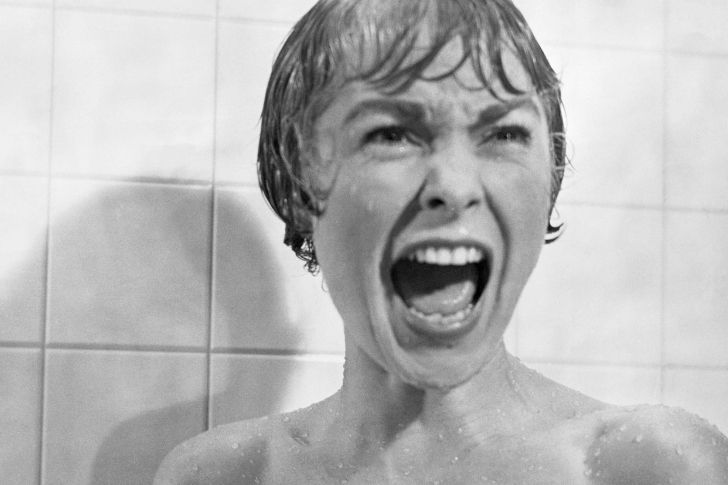
In a movie, timing is critical. That is perhaps why Director Alfred Hitchcock forbade anyone from entering the theaters once the projector started rolling. In this movie, we could see an embezzling secretary on the run and entering the Bates Motel. After checking in and deeming it appropriate to take a shower, a scary 45-second scene composed of piercing screams, flashes of knife and skin ensued. This had made motel guests fearful of ending up the same, with credit to the gruesome scenes in the movie. Take note that much of the sounds were carefully researched, in true Hitchcock style.
King Kong (1933) | Big Ape Meets Big Apple
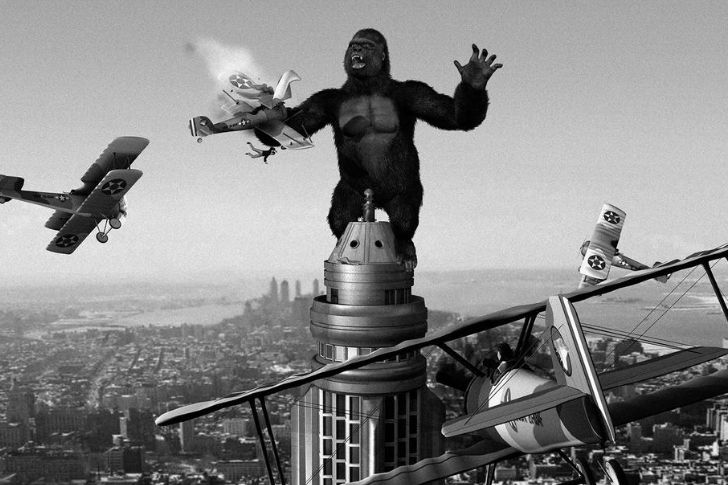
The roar of King Kong still reverberates today with its many adaptations, but the mighty monster first appeared in 1933. The ape is given credit as the “Eighth Wonder of the World”. With the limitations of technology back in 1933, the movie depiction of a monstrous gorilla was still stunning. The most spectacular scene is King Kong atop the Empire State Building itself. He takes the final plunge, all for love. For sure the Depression-era audience understood the erotic monumental symbolism. In modern adaptations, we have seen King Kong face-off with Japan’s Godzilla—an analogy of a phallic fight between two giants.
The Godfather (1972) | The Mane Scene
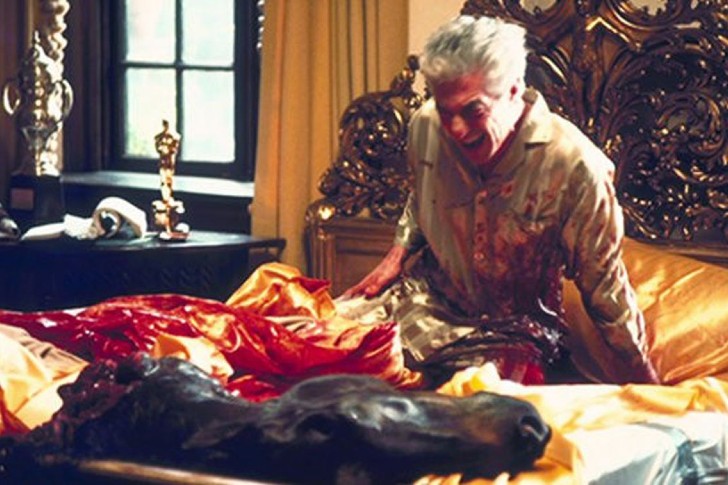
The Godfather is an action-packed movie but one of the most memorable scenes would be when Jack Woltz, who had earlier rejected a deal with the Corleone family, wakes up in his Bel Air mansion. He notices something wet in his silk sheets and realizes it is blood. In a panic, he throws the bedding and uncovers the head of his most beloved stallion. This scene immediately makes the audience and Jack realize the degree of the ruthlessness of the Mafia. The film used an actual horse head that had to be imported. The blood was chocolate syrup, however. Animal-rights advocates would have gone crazy over this.
Casablanca (1942) | The Long Good-Bye
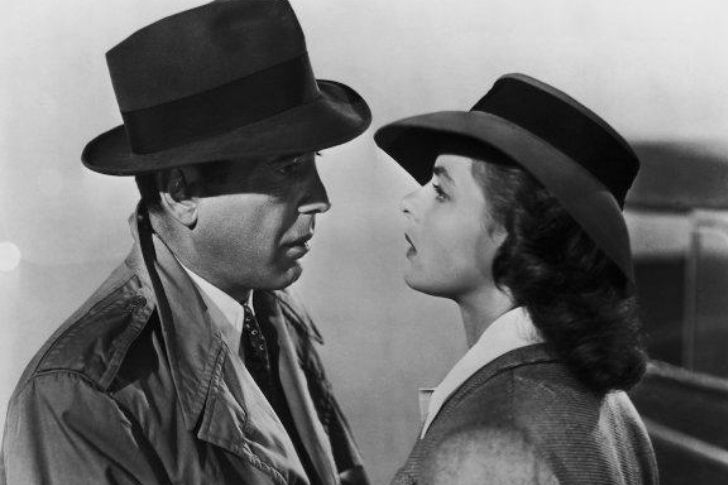
The story was set during World War II and focused on an American expatriate who had to face tough choices in life. As such, only the best actors and actresses were cast for the many roles in the film. Humphrey Bogart became the leading man, and the scene where he shot the German general before going into hiding remains memorable. Before going, he delivered the line “Our problems don’t amount to a hill of beans.” This left Ingrid Bergman tearful and emotional and was given credit as one of the finest statements of sacrifice shown in a film.
Saving Private Ryan (1998) | D-DAY
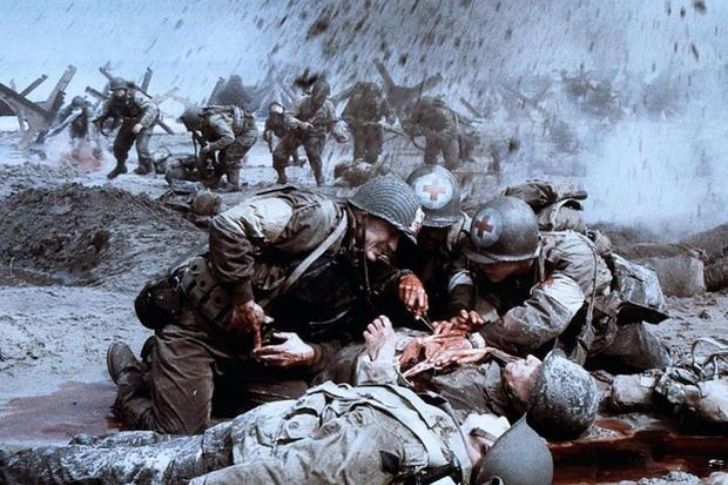
To a certain degree, almost every scene in this movie was memorable. This was also seen as a movie that changed how the war was viewed and how a hero was defined. Spielberg evoked so many emotions when he recreated the terror and chaos that was D-Day. One scene, where a PT boat was seen hurtling towards Omaha beach with the ensuing horrific sequence of gore and horror was remarkable. After all the riot, and things somehow settled, we can see Tom Hanks’ hands shaking. This could be interpreted as heroism being seen as fragile and easily shaken—which lent a human face to the concept.

